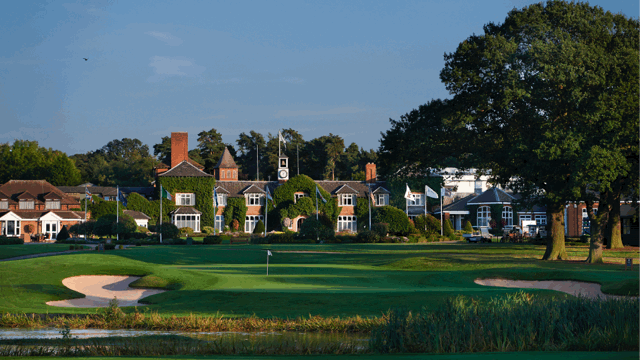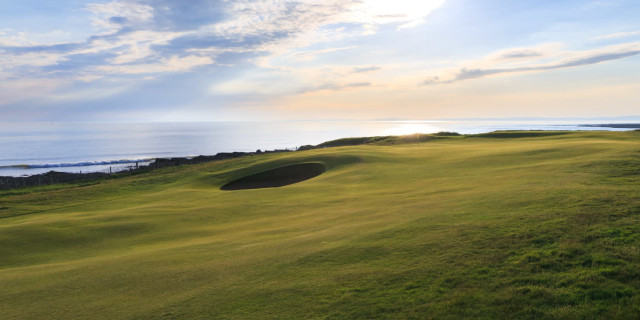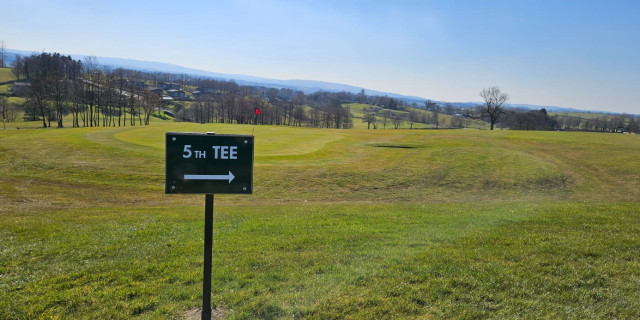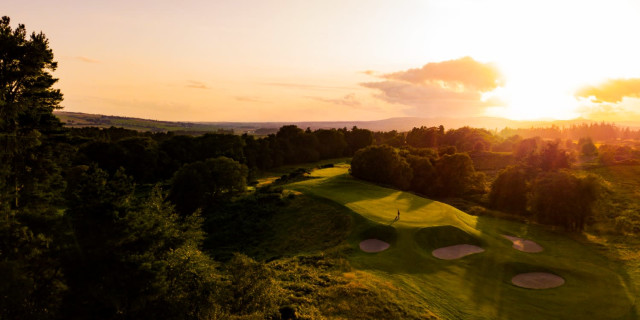Feature Review: Brabazon
The Brabazon at the Belfry is arguably the most iconic golf course in the United Kingdom, thanks to its status as the world’s only four-time Ryder Cup host. Even if you’ve never played here, almost all golf fans will able to summon memories from golf’s greatest event – whether that’s Christie O’Connor’ s 2-iron approach to the 18th in 1989 or the multitude of other timeless moments from the matches in 1985, 1989, 1993 and 2002. The Brabazon’s Ryder Cup heritage is celebrated, and understandably forms the basis of most of The Belfry’s golf-related marketing activity, but to attribute too much focus on its past would be to do a disservice to a course that would still garner high-acclaim if it was picked up and re-located some 200 miles away.
The Brabazon – named after former PGA President Lord Brabazon - opened for play in 1977 after the re-location of the PGA. Seve Ballesteros and Johnny Miller took on Tony Jacklin and Brian Barnes in a challenge match to open the new layout. Since then, hundreds and thousands of golf fans from all around the world have made pilgrimages to the revered Midlands venue to take on a course that continues to rise in both popularity and stature. After all, the chance to play a course graced by the likes of Tiger Woods, Jack Nicklaus, Nick Faldo, Seve and Tom Watson is rare indeed.
The Brabazon was designed by Dave Thomas and Peter Alliss, who deserve enormous credit for turning a relatively flat piece of parkland into truly memorable layout. The presence of numerous lakes, dastardly bunkers and sprawling tiered greens ensure there is ample variation and visual stimulation. It’s a long course off the tips, but one that simply cannot be overpowered. Finesse and course management are key to negotiating an immaculately conditioned layout that will excite and test in equal measure.

Front 9
In my view, the front side is the stronger of the two nines, although both have numerous plus points. I just feel the variation and strength of design is slightly better on the outward nine, undoubtedly aided by water that features on seven of the nine holes.
The first hole is a relatively bland par-4, but the course comes alive from the 2nd – a well-crafted short short-par 4 with a ditch dissecting the fairway just short of boomerang-shaped green. The best par-5 on the golf course follows, and it’s a hole that demands good strategy. The driving area is fairly large, but a lake – flanking the left side of the fairway - comes into play on the lay-up shot. There’s so much room to the right, but the vast body of water seems to have magnetic properties. The braver you are, though, the shorter the approach to a shallow, raised green fronted by water and protected by sand and rough-covered banks.
There are some excellent par-4s at the Brabazon, but my favourite is the 6th hole. It’s a hugely daunting tee shot, with water running all the way up the left side of a fairway that turns from right to left before the green. Don’t stray right, though, or you could find the body of water that sits to the right of the 5th tee. From the middle of the fairway, you’ll have to cross the corner of the hazard to find a large, two-tiered green that slants from back to front. Bail out right and you’ll face a treacherous shot back towards water from a well-placed bunker; pull your approach and it’s curtains.
There’s only one par-3 on the front nine, but it’s memorable. The 7th hole requires a mid to long iron, over another lake, to an elevated green guarded by a deep bunker to the left. And, from there, the excitement doesn’t let up. Water comes into play on both the tee shot and approach to the stroke index one par-4 8th, as it does on the 9th – another tough hole with a narrow fairway and huge green protected by sand, grassy banks and, you guessed it, water.
Back 9
I did prefer the front nine, but that’s not to say there aren’t some truly memorable holes on the back side, the first being one of the most famous short par 4s in the world. Seve first drove the green here in 1978, and although it’s a shot fraught with peril, it’s one that you just have to take on when the tees are up. That said, when they’re back, only the longest hitters will be able to make the carry.

When they’re up, it’s about a 200-yard carry to a clear a stream that dissects the fairway about 150 yards from the tee, cuts across in front of the green and flanks its left side. It’s such a dangerous shot – and not the percentage play at all when you can get home with an 8-iron and a wedge – but the temptations is just too much. It’s a great hole made even better by its positioning on the scorecard. You’ll either get your back nine off to a flyer or be playing catch up from the word go. How did I fare? I found water. Twice. Do I regret not playing smart from the tee? Absolutely not.
The weakest stretch of the golf course comes after the excellent par-3 12th – a long hole over water – but there’s still plenty to keep you interested before a truly riveting finish. The par-5 17th is a well-designed hole that swings round to the right. It’s a relatively generous driving area, but lay-ups are semi-blind, over banks and bunkers that jut into the fairway around the 300-yard mark. Sand also lines the entire left of the lay-up zone so you’ll need to be precise with your second before a short-iron to a deep, well-guarded green that slopes from back to front.
The 18th is arguably the finest closing hole in the UK. It’s hard to identify a line on the tee shot and work out how much of the lake to cut off. If you’re over-conservative, you’ll find sand or tress that sit on the right side of the hole. If you’re too aggressive, or if you pull your tee shot even slightly, chances are you’ll find a watery grave. Even with the perfect tee shot, a long-iron or fairway wood will be required to find a three-tiered green that sits beautifully in the shadow of the clubhouse. Oh, and there’s also the small matter of a long carry over water, as if the approach wasn’t difficult enough already.
Overall, the Brabazon is a golf course that very much lives up to its high billing. It’s really well designed and conditioned, there’s great variation and water is expertly used to create a number of stand-out holes. Overall, I’d give it a rating of 9/10.
Related Articles
Related Content:

















